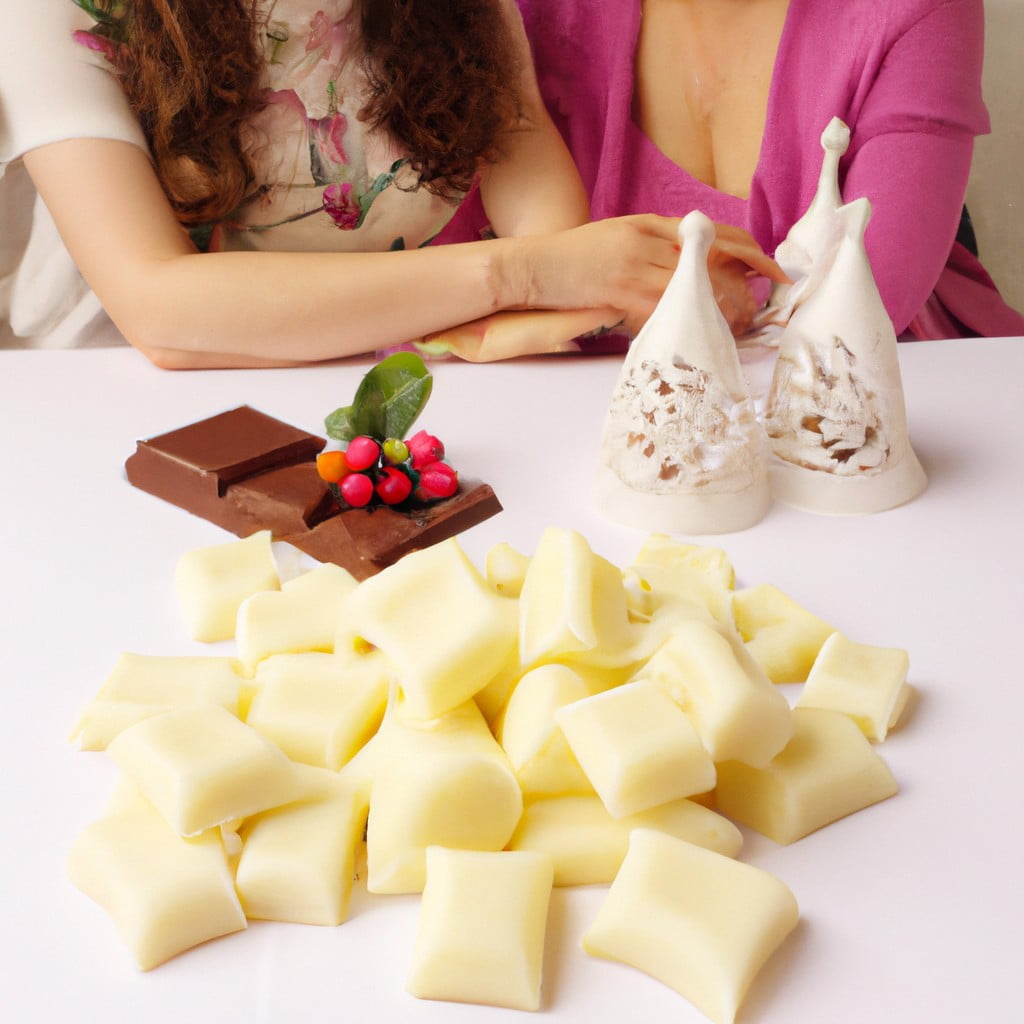Discover whether white chocolate qualifies as genuine chocolate and its unique characteristics that differentiate it from milk and dark varieties.
Key takeaways:
- White chocolate does not contain cocoa solids.
- White chocolate is made with cocoa butter, sugar, and milk solids.
- White chocolate has a creamy texture and a pale color.
- Dark chocolate contains both cocoa solids and cocoa butter.
- Milk chocolate includes milk powder or condensed milk.
Inside
Definition of Chocolate

Chocolate traditionally consists of cocoa solids, cocoa butter, and sugar. These components characterize the rich, complex flavor and distinctive textures of various chocolate types.
The presence of cocoa solids is crucial, as they contain the compounds responsible for chocolate’s deep flavors and antioxidant properties.
Chocolate’s parent, the cacao bean, undergoes fermentation, drying, roasting, and grounding into a paste—known as chocolate liquor—which comprises both cocoa solids and cocoa butter.
The proportion of these ingredients, along with additional elements such as milk powders in milk chocolate, defines the variety and intensity of chocolate’s taste and mouthfeel.
The flavor we associate with chocolate primarily comes from the processed and refined cacao beans, which are distinct from the creamy base of white chocolate.
White Chocolate Ingredients
White chocolate contains cocoa butter, sugar, and milk solids. Unlike dark and milk chocolate, it does not contain cocoa solids, which are responsible for the rich flavor and color in other types of chocolate.
Lecithin, usually sourced from soy, acts as an emulsifier, ensuring a smooth texture. Vanilla or other flavorings are often added to enhance taste.
The cocoa butter, which must be at least 20% of the chocolate’s composition, is the primary factor that allows white chocolate to be classified within the chocolate family, giving it a creamy texture and a melting point that is similar to milk and dark chocolates. It’s the absence of cocoa solids that distinguishes white chocolate, providing a different flavor and a pale color compared to its darker counterparts.
The Chocolate Making Process
In crafting chocolate, cacao beans undergo several steps. First, beans are harvested, fermented, and dried. Next, they’re roasted to develop flavor. The resulting cacao nibs are ground into a paste known as chocolate liquor. This liquor, containing both cocoa solids and cocoa butter, is the essence of chocolate.
For dark or milk chocolate production, the liquor is combined with additional cocoa butter, sugar, and, in the case of milk chocolate, milk powder or condensed milk. The mixture then undergoes conching, a process of smoothing and flavor development. Finally, tempering gives the chocolate its shine and snap.
In contrast, white chocolate’s process diverges after the liquor stage, as it doesn’t contain cocoa solids, only cocoa butter, combined with sugar, milk products, and often vanilla and an emulsifier like lecithin. Despite its differences, white chocolate shares conching and tempering steps with its darker relatives.
Legal Definition of Chocolate
Regulations governing the classification of chocolate vary by country, but they often dictate minimum cocoa content requirements. In the United States, the FDA stipulates that milk chocolate must contain at least 10% chocolate liquor, while for white chocolate, it must contain at least 20% cocoa butter, at least 14% total milk solids, and less than 55% sweeteners. Conversely, the EU has comparable regulations with some differences in percentage requirements. These legal stipulations ensure products marketed as chocolate meet certain standards, and also distinguish white chocolate from milk and dark varieties, conferring upon it a distinct identity within the chocolate family.
White Chocolate Versus Dark and Milk Chocolate
White, dark, and milk chocolates differ primarily in their cocoa content and ingredients. Dark chocolate contains both cocoa solids and cocoa butter, with minimal to no milk, and has a robust chocolate flavor. It typically has a higher percentage of cocoa, making it richer and less sweet. Milk chocolate includes milk powder or condensed milk, in addition to cocoa solids and cocoa butter, which lends it a creamier texture and milder chocolate taste.
White chocolate, in contrast, lacks cocoa solids entirely—the component most would consider the essence of ‘chocolate’. It’s made with a blend of cocoa butter, sugar, and milk solids which gives it a pale color and a smooth, velvety texture. The flavor is sweet and milky, with none of the bitter notes found in dark chocolate. Because it doesn’t contain cocoa solids, some purists argue that it doesn’t qualify as ‘true’ chocolate, though it is recognized as a type of chocolate by food regulatory bodies, given its cocoa butter content.